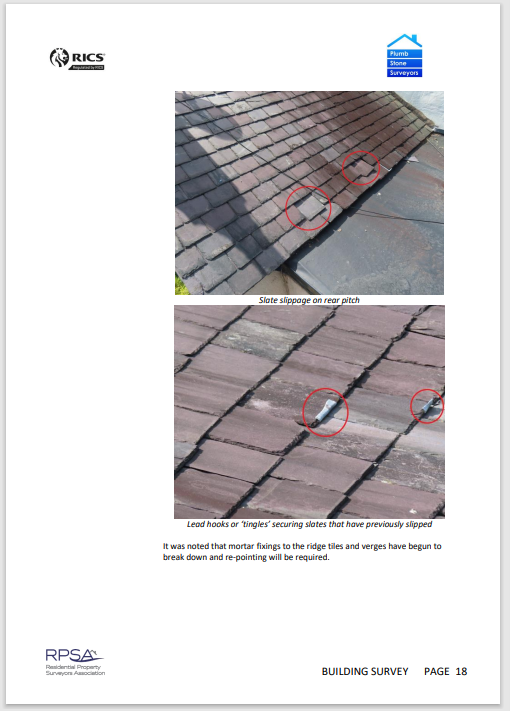Building surveys provide greater detail on all elements of the property condition, including advice on repairs and ongoing maintenance needs.
A (level 3) Building Survey was carried out on these former workers cottages in a small Flintshire village, North Wales. After inspection, the buyers had not anticipated the extent and cost of repairs needed to this property.
High level inspection of the roof with a camera pole revealed many slipped and damaged slates, whilst the roofline was significantly distorted owing to ‘sagging’ of the inner roof frame.
Damp issues were identified throughout the property. Issues were mostly related to the previous use of inappropriate materials, such as cement render to the exterior walls and the raising of exterior ground levels with newer paving. These matters combined to prevent the walls from ‘breathing’.
Traditional buildings rely upon moisture evaporation and ventilation to prevent issues of dampness. This is usually facilitated with the use of lime mortars/plasters instead of cement.
Based on the comprehensive report supplied by Plumb Stone Surveyors, the buyer was able to negotiate a £40,000 reduction in the purchase price to allow for the necessary repairs to the roof and to target damp issues.
After purchase, further advice was provided to the buyers as they painstakingly renovated the property. This advice focussed upon the use of appropriate materials for a traditional building.





© Copyright 2024 | Plumb Stone Surveyors Ltd